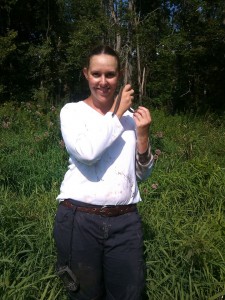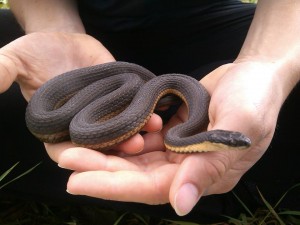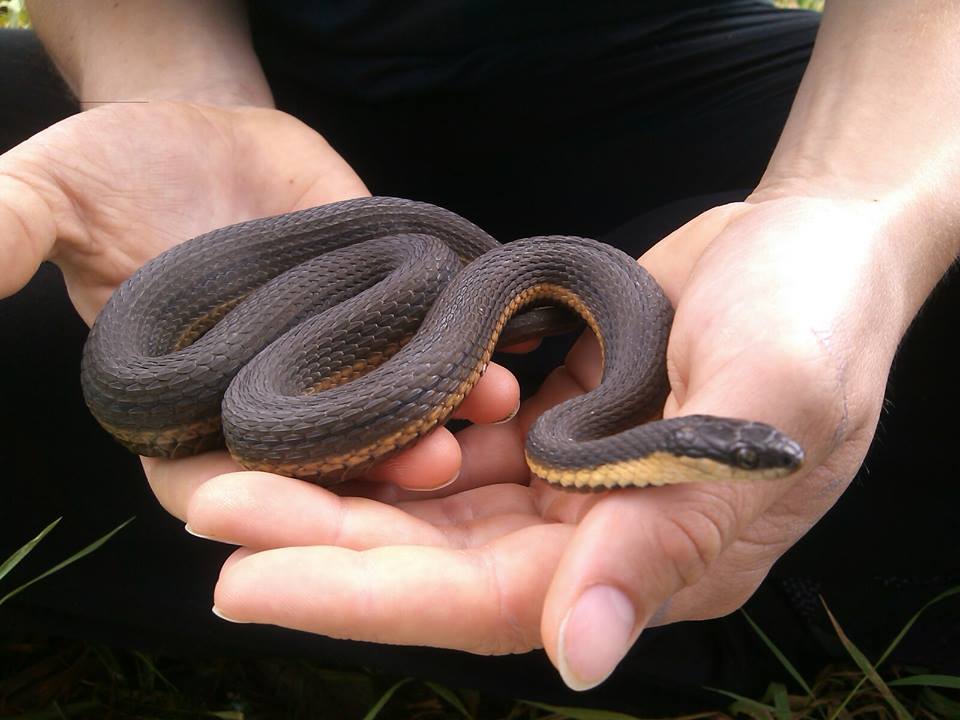The month of September represents a time of change. The leaves begin to turn colour as they prepare to fall from the trees. Summer comes to an end as children head back to school for another year of learning. As animals like Queensnakes begin to prepare for their winter hibernation, this signals the end of a great season of “herping” for the staff at the Huron Stewardship Council.
Hi! My name is Lauren Schmuck. I am a Species at Risk Technician at the Huron Stewardship Council. I have had the privilege of working with an endangered reptile native to Huron County known as the Queensnake. Yes, you read that correctly! I said “snake” and “privilege” in the same sentence.

The Queensnake is an amazing reptile with very specific diet and habitat needs. Not only does the Queensnake require clean, high quality water, but so does its only prey item. A freshly molted (shed) crayfish is the only thing that scientists know a Queensnake will eat! And you thought your kids were picky eaters!
The Queensnake is Ontario’s most aquatic snake and is frequently found swimming in streams and rivers with cobble and gravel bottoms and shorelines. Queensnakes use these rocks for hiding, hunting, and keeping warm. On a warm and sunny day, Queensnakes can be found basking (or sunbathing) on top of rocks near the water’s edge. This is how Queensnakes warm themselves, as they are ectothermic which means that they get their heat from outside sources, such as the sun. On cold days, Queensnakes are not often seen as they are hiding somewhere safe, trying to conserve their energy.

People are often surprised at the small size of the Queensnake. Pictured in Figure 2 is a pregnant (or “gravid”) adult female Queensnake. They do not get any larger than that. So what is there to be afraid of? Unless you happen to be a literate crayfish reading this blog, the answer is absolutely nothing. Queensnakes, like all but one other snake in Ontario, are non-venomous and are far more concerned with getting away from you than harming you. Not one of the 19 Queensnakes that I have found and held this year have attempted to harm me in anyway.
Queensnakes, like over 200 other species native to Ontario, are classified as “species at risk”. This means that unless humans do something to change current trends, the species will eventually go extinct. There are 4 different classifications of species at risk (special concern, threatened, endangered and extirpated), and Queensnakes are listed as endangered. An endangered species is a species that lives in the wild in Ontario, but is facing imminent extinction or extirpation.
That is where groups such as the Huron Stewardship Council (HSC) come in. This year, HSC is coordinating a multi-partner, province wide Queensnake research project to answer several questions, such as, do Queensnakes eat anything other than freshly molted crayfish, what are the population genetics of the Queensnake in southern Ontario, and what is the distribution of Queensnakes in southern Ontario? This research year has brought biologists closer to answering these important questions and recovering this fascinating snake.
Lauren Schmuck
Also, check out our Queensnake Stewardship Guide for more information of how you can help conserve this rare species

